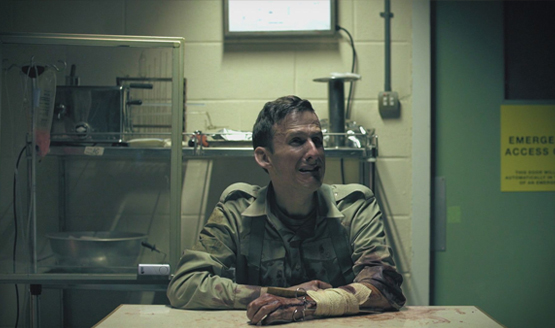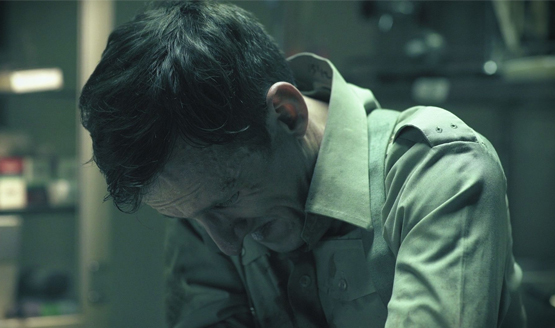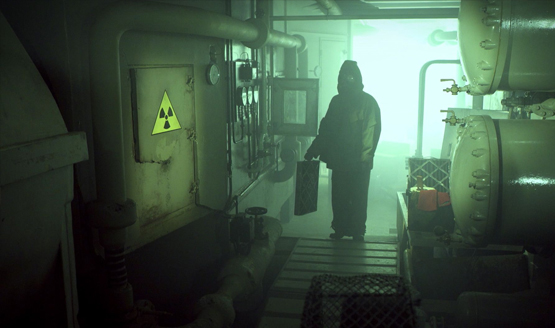With Splendy Games’ The Bunker, the studio has managed to do something a lot of other studios haven’t done in recent memory, and that’s to make and release a full-motion video game.
Fortunately, The Bunker is more than decent to give it a go, and that piqued our interest somewhat. So much so that we then asked Splendy Games a handful of questions regarding The Bunker, the studio and FMV games in general.
Speaking to PlayStation LifeStyle and answering our questions was Splendy Games’ Allan Plenderleith, Director and writer of The Bunker.
PlayStation LifeStyle: You got to film in an actual bunker. How surreal was that, and do you feel like that added authenticity was key to making the game’s story feel impactful?
Allan Plenderleith: We found the bunker on a location scout and couldn’t believe our eyes when we walked in – everything had been left by the government in the 90s, all the computers, desks and equipment. It meant on our tight budget we could get that real authenticity with a few adjustments here and there – and it helped the actors too, they weren’t trying to act against dry old green screen!
PSLS: Did you have the concept of The Bunker first and then decide on making it a FMV title, or how did the idea come about?
Plenderleith: I’m a huge film fan and a massive gamer and I’ve seen games becoming more and more like movies over the years – games like Heavy Rain and Telltale’s Walking Dead series are all about strong, compelling narratives with interesting characters and they’ve found huge audiences. There’s something powerful about real performances from actual actors that you get in movies which resonate with audiences – and that’s what we wanted to bring to a game like The Bunker.
PSLS: What are some of the unique challenges that come with both filming and creating a game like this?
Plenderleith: When filming and creating The Bunker we had many limitations, mainly the budget, which restricted how elaborate we could be with the gameplay. We decided to focus on the story and give gamers the most compelling story we could shoot whilst pushing the boundaries of what has been achieved in FMV to date. No one has ever done a point and click adventure in FMV because its very complex and expensive, but we wanted to give it a go. Fortunately we’ve had a great response, so hopefully moving forward, our next game will be (an) even more interactive and immersive.
PSLS: Are more FMV titles something the studio is interested in doing in the future? Do you feel like there’s a lot of potential in that realm that hasn’t really been fulfilled yet?
Plenderleith: FMV is such an outdated term but it’s a good short hand for gamers – we never had that term in mind when we created The Bunker, it was just a game which happened to use real actors rather than animated characters. I am interested in developing stories which move gamers, and for me using real actors, as opposed to animated models, is far more emotionally impactive. I’ve yet to see a CGI performance which beats that of a real actor. Our next games will take everything we’ve learned and hopefully push gaming into a brave new cinematic territory.

PSLS: Why FMV? Wouldn’t it have been cheaper to make a more traditional cinematic game or is hiring actors and doing all the props mean more investment?
Plenderleith: It’s actually very costly to hire a team to animate CGI characters and get actors to perform in mocap suits to track their performance. It’s WAY cheaper to get a good actor, give them a good script and shoot them. It’s much faster too. The whole game was filmed in three weeks – the next six months we spend building the game, but all our ‘assets’ as such were in place.
PSLS: The ending of The Bunker was intentionally left ambiguous, right? Can the studio comment on it? What did happen after the player left or stayed?
Plenderleith: It’s better for players if they play it for themselves and make their own decision. We had a big discussion (the writers) about whether or not gamers would choose to stay or leave. At the end of the game, it’s up to the player to decide if John deserves to leave – after everything he has been through (which you will only find out if you’ve played it) does he really deserve to escape? It’s been very cool watching gamers play this and have such a heated debate at the end!

PSLS: From a gameplay perspective, what can be done with FMV and gameplay to make it more cohesive and immersive that traditional games can’t pull off?
Plenderleith: We pushed the gameplay as much as our budget allowed in The Bunker, and would love to do much much more in our next title. We want to bring in multi-path narratives, multiple endings and branching dialogue – it’s all possible with a bit more budget. All we’re trying to do is take everything that’s awesome about film and TV, and combine it with the excitement and immersiveness of games.
PSLS: What were the influences (film and game) for The Bunker?
Plenderleith: My main influences from the film world are Alien and The Shining. That feeling of being alone in a space where you don’t belong, and an entity which wants you gone. Gaming influences would be Broken Sword and the Lucasarts point and click adventures, Heavy Rain, Fahrenheit, and the wonderful narrative-led indie games of late such as Life Is Strange and Firewatch.
We’d like to thank Wales Interactive and Splendy Games for taking the time out to answer our questions. The Bunker is out now on PS4.








